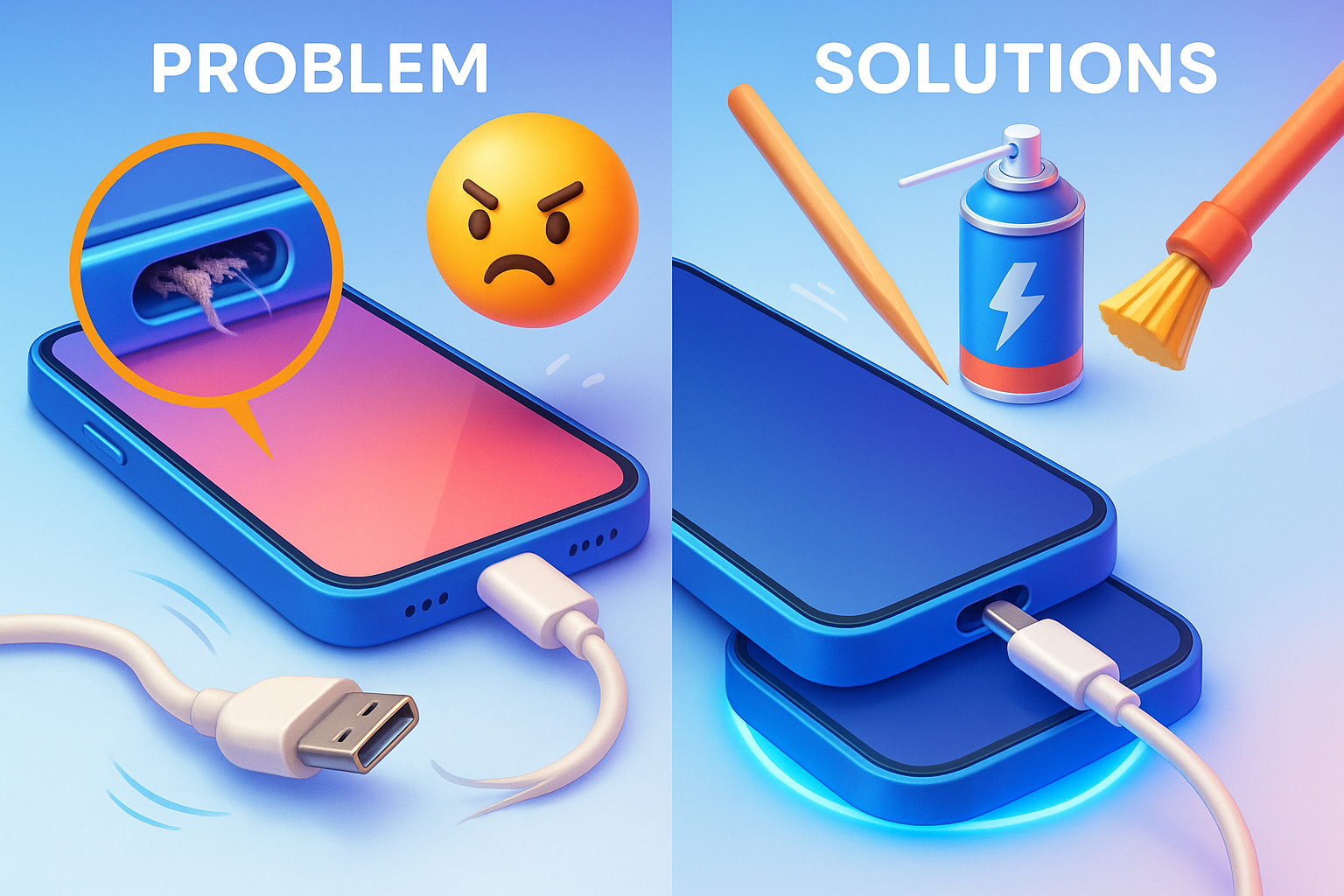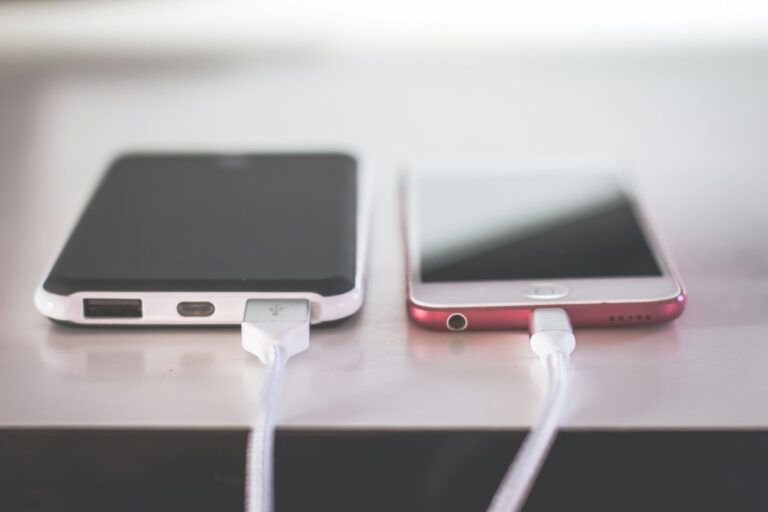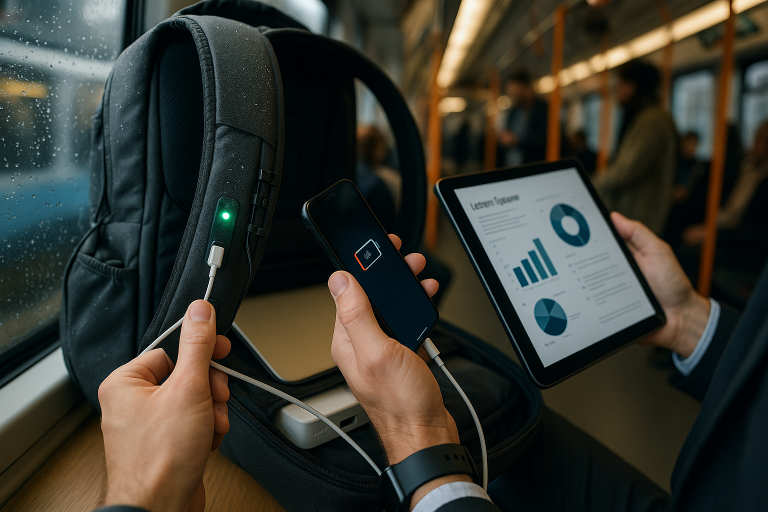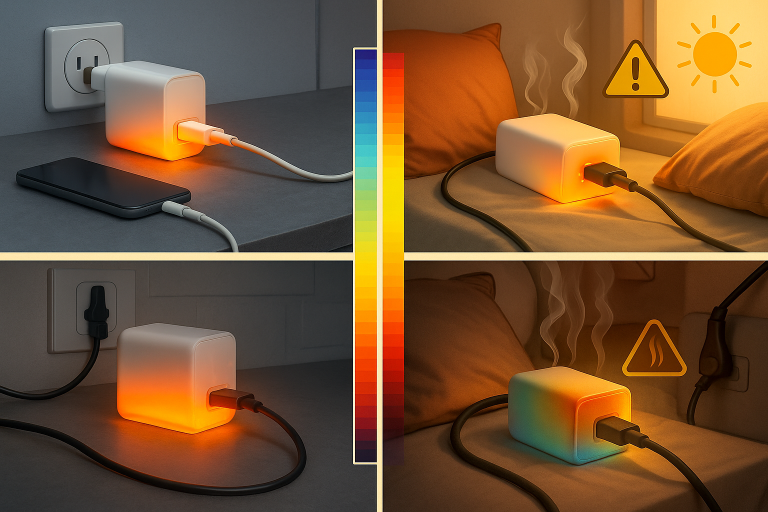Why Your Charger Won’t Stay in Your Phone (And How to Fix It)
We’ve all been there: you plug in your phone to charge, only to find the cable slips out with the slightest nudge. Not only is this frustrating, but it can also damage your device or leave you stranded with a dead battery. A loose charger connection is a common issue, but luckily, it’s often fixable. In this guide, we’ll break down the reasons your charger won’t stay put and provide step-by-step solutions to get your phone charging reliably again.
Tools and Accessories to Fix Loose Phone Chargers
| Product | Description | Amazon Link |
|---|---|---|
| Port Cleaning Tool Kit | Gently removes dust, lint, and debris from charging ports | View on Amazon |
| High-Quality USB-C Charging Cable with Tight Fit | Firm, secure connection to reduce wobbling and slippage | View on Amazon |
| Magnetic Charger Cable | Easy snap-on charging with less strain on the port | View on Amazon |
1. Common Causes of a Loose Charger Connection
A. Debris in the Charging Port
Over time, lint, dust, and crumbs from pockets or bags can accumulate in your phone’s charging port. This debris creates a physical barrier, preventing the charger from seating properly. A clogged port is one of the most common culprits behind a loose connection.
B. Worn-Out Charging Cable or Connector
Frequent bending, twisting, or yanking can damage cables. Frayed wires, bent pins (the small metal contacts inside the connector), or a cracked USB/Lightning tip can cause the charger to wobble or disconnect. Cheap third-party cables are especially prone to wear.
C. Damaged Phone Charging Port
Repeated rough handling can bend or misalign the delicate pins inside your phone’s charging port. Moisture exposure (e.g., spills or humidity) can also corrode these pins, reducing their ability to grip the charger.
D. Incompatible or Low-Quality Chargers
Non-certified chargers may not meet the exact size or design specifications of your phone’s port. For example, a generic Lightning cable might fit loosely in an iPhone compared to an Apple-certified one.
E. Software Glitches
Though rare, software bugs can interfere with charging detection. If your phone intermittently recognizes the charger, a simple restart might resolve the issue.
2. Step-by-Step Troubleshooting Guide
Step 1: Inspect the Charging Cable and Adapter
- Check for visible damage: Look for frayed wires, bent connectors, or a cracked charging tip.
- Test with another cable: Borrow a friend’s charger or use a spare. If the new cable works, your original one is likely faulty.
Step 2: Clean the Charging Port
Tools needed: Toothpick, compressed air, soft-bristled brush, isopropyl alcohol (90%+), flashlight.
- Power off your phone to avoid short circuits.
- Use a flashlight to inspect the port for debris.
- Gently remove lint with a wooden or plastic toothpick. Avoid metal tools to prevent scratching the pins.
- Blow out debris with compressed air (hold the can upright to avoid moisture spray).
- For stubborn grime: Dip a cotton swab in isopropyl alcohol, wring it out, and lightly brush the port. Let it dry completely before charging.
Pro Tip: Avoid using paper clips or needles—they can damage the port’s internal components.
Step 3: Check the Phone’s Charging Port
- Inspect for bent pins: Shine a light into the port. If the metal pins look crooked or flattened, the port may need professional repair.
- Look for corrosion: Green or white residue indicates moisture damage. A technician can clean this with specialized tools.
Step 4: Test with Another Device
Plug your charger into a different phone or tablet. If it works normally, the issue lies with your original device’s port.
Step 5: Restart or Update Your Phone
- Restart your phone to clear temporary software glitches.
- Check for updates: Go to Settings > Software Update (Android) or Settings > General > Software Update (iOS).
3. Preventive Measures
- Keep the Port Clean: Clean your charging port monthly with compressed air.
- Handle Cables Carefully:
- Avoid yanking the cord to unplug. Grip the connector instead.
- Don’t use your phone while it’s charging to reduce port strain.
- Invest in Quality Accessories: Buy cables certified by your phone’s manufacturer (e.g., MFi for Apple, USB-IF for Android).
- Protect Against Moisture:
- Keep drinks away from your phone.
- Use silica gel packs in humid environments to absorb moisture.
4. When to Seek Professional Help
If cleaning and cable swaps don’t solve the problem, it’s time to visit a repair shop. Warning signs include:
- Physical damage: A wobbly port, bent pins, or corrosion.
- Intermittent charging: The charger only works at certain angles.
- Safety risks: Sparks, overheating, or a burning smell.
Repair Cost Estimates:
- Charging port replacement: $50–$150, depending on the phone model.
- Cleaning services: $20–$50 (cheaper if covered under warranty).
5. Alternative Solutions
- Wireless Charging: If your phone supports Qi wireless charging, skip the port entirely.
- Magnetic Adapters: Products like MagSafe (for iPhones) or magnetic USB-C adapters let you “snap” the charger into place, reducing port wear.
6. FAQs
Q: Can I fix a bent charging port myself?
A: No. DIY attempts often worsen the damage. Leave pin repairs to professionals.
Q: How do I know if my cable is damaged?
A: Look for fraying, loose connectors, or intermittent charging. Test it with another device.
Q: Why does my phone charge only when held at an angle?
A: This usually indicates debris in the port or bent pins. Clean the port first; if the issue persists, seek repairs.
7. Conclusion
A loose charger connection is more than an annoyance—it can signal underlying damage that worsens over time. By cleaning your port regularly, using high-quality accessories, and avoiding rough handling, you can extend your phone’s lifespan and keep it charging smoothly. If DIY fixes fail, don’t hesitate to consult a professional. With the right care, you’ll never have to play the “charging cable balancing act” again!
Optional Add-Ons for Readers:
- Recommended Cleaning Kit: iFixit Charging Port Cleaning Tool .
- Certified Charger Brands: Anker, Belkin, Apple, Samsung.
- Safety Note: Always power off your device before cleaning the port.
By addressing the root cause and following these tips, you’ll save money, avoid frustration, and keep your phone powered up when you need it most.




